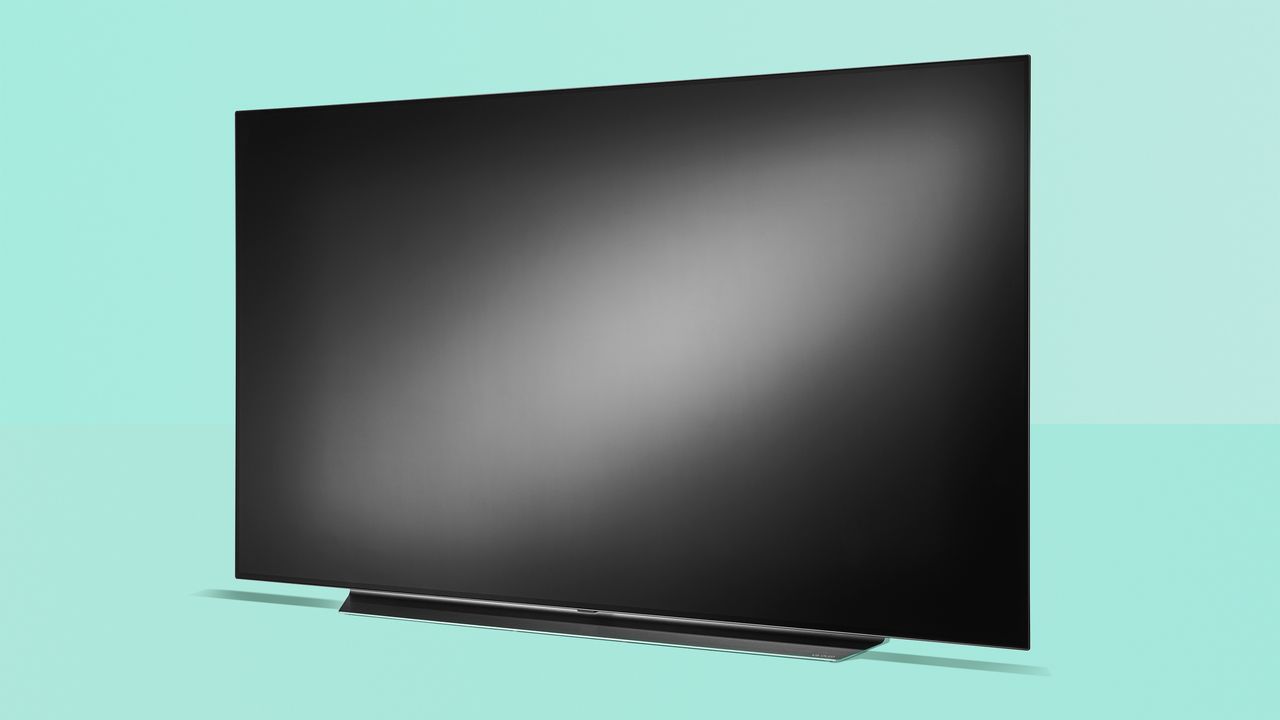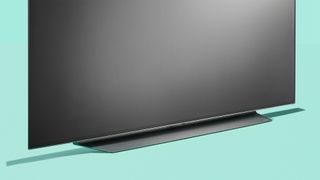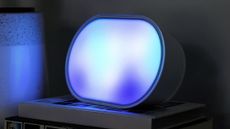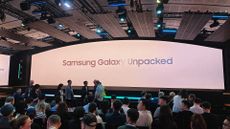LG C9 review (OLED65C9): a top-value OLED TV for image quality and features
The LG C9 has image quality to rival TVs twice the price, but doesn't skimp on processing skills or next-gen connectivity to get there


The LG C9 feels like a no-compromise OLED TV, but with amore affordable price tag. It builds on the foundations of its predecessors with small but significant improvements, making for one of the best TVs you can buy.
-
+
Mostly stellar, contrast-rich picture quality
-
+
Easy to use
-
+
Stunning design
-
+
Great value for what’s on offer
-
-
Not as bright for HDR as a few LCDs
-
-
The screen’s quite reflective
-
-
Theoretically susceptible to image retention
-
-
No HDR10+ support
Why you can trust T3

A newer version of the LG C9, called the LG CX, has now been released as part of LG's 2020 range. Read our full LG CX review here.
Welcome to T3's LG C9 review. This is LG’s most all-round attractive OLED TV to date. It’s not the cheapest; that honour belongs to the B9 series – here's our full LG B9 review.
The C9 series is, though, the most affordable range to get LG’s latest Alpha 9 Generation 2 picture processor. And the difference that makes to picture quality really matters – it remains a staple of our list of the best TVs and best OLED TVs despite newer TV models having now been released.
The C9’s stellar pictures are joined by an excellent operating system and gorgeous design, too, making it seriously hard to resist.
There are other advanced features too, including HDMI 2.1 ports, which mean that you could take advantage of the 120Hz screen with the PlayStation 5 and Xbox Series X when they come out, as well as other gaming features.
And, of course, it's a real showpiece for how good OLED TVs can look – stunning vibrant colours, and rich, deep blacks in moody scenes that don't look washed out or lose detail, like many LCD screens do.
We tested the 65-inch LG OLED65C9 for this review, but it's also available as the smaller 55-inch LG OLED55C9 or the giant 77-inch LG OLED77C9. Again, these sizes have earned high places in our list of the best 55-inch TVs and best 65-inch TVs.
- OLED vs QLED explained: what they are, and which is best for you
- The best soundbars to instantly upgrade your TV's audio
LG C9 review: Price and features
At around £1,399, the 55-inch LG OLED55C9 is one of the more affordable OLED TVs on the market. The 65-inch LG OLED65C9 that we tested can be found for around £1,999, which is still very reasonable for that size.
The biggest you can go with the LG C9 series is actually the colossal 77-inch OLED77C9. While this monster gives you a seriously cinematic experience, though, its £6k asking price is likely a step too far for most.
The features we'll discuss in this review apply to all the models in the range – it's basically just a matter of you choosing which size and budget suits you best.
The main attraction of the OLED65C9 is its OLED screen. These have become the stuff of legend in the AV world, with their contrast and viewing angle advantages helping them find their way into the homes of a huge number of serious AV fans, despite them typically costing way more than most LCD TVs.
LG is no longer the only brand that sells OLED TVs, though. So being an OLED TV is no longer enough in itself to make the OLED65C9 a winner. Cue LG’s latest video processor.
Called, rather grandly, the Alpha 9 Generation 2, the OLED65C9’s processor improves over that of LG’s previous OLED generation in multiple ways. High dynamic range (HDR) images, for instance, look more dynamic and bright, as well as being filled with richer and more consistent colours.
Sharpness and detail levels have been stepped up – especially when the TV is upconverting sub-4K sources to its native 4K screen, and there’s better motion handling.
The new processor also impacts sound quality, thanks to LG’s latest AI Sound system. This optimises all types of incoming sound to match the precise capabilities of the set’s speakers.
I’ll cover these improvements more in the performance section of the review.
The LG OLED65C9 is a big fan of Dolby. Dolby Atmos sound decoding is built in to deliver the format’s extra clarity, detailed audio placement, and height effects. Dolby Vision HDR support, meanwhile, adds extra scene by scene picture information and more colour precision to HDR picture feeds from Dolby Vision-encoded sources.
The OLED65C9 can also handle the HLG HDR format often used by live 4K HDR streams – including those delivered by the BBC over its iPlayer.
There is, though, no support for the HDR10+ format, which, like Dolby Vision, adds extra scene by scene picture information to help TVs perform better. The main source for HDR10+ video is Amazon Prime Video, though some 4K Blu-rays also use it. You'll get regular HDR when watching these, which is still great.
The OLED65C9’s connections, finally, deserve more of a mention than most because all four of its HDMIs are apparently full bandwidth HDMI 2.1 affairs. This means, basically, that they should be compatible with all the features (bar 8K playback) we can expected from the next generation of games consoles.
This includes variable refresh rates (including Nvidia G-Sync technology), automatic low latency mode switching, and gaming in 4K at up to 120 frames a second. Most rival 4K TVs won’t carry full HDMI 2.1 ports, and so can’t be guaranteed to deliver all these gaming features – especially 4K/120fps graphics.

LG C9 review: Picture performance
While we’re now at a stage where each new generation of OLED TV typically only achieves evolutionary rather than revolutionary picture quality improvements, the LG C9 is certainly a healthy step up from its predecessor.
It does a better job, for instance, of revealing the pristine sharpness and detail of a good 4K Blu-ray. Especially since, as promised, the set handles motion more successfully than any previous LG OLED. LG’s TruMotion processing reduces judder without throwing up many unwanted processing side effects – provided you stick to its lowest power setting, anyway. But motion also looks less juddery even with TruMotion turned off.
The OLED65C9’s new processor also does a markedly better job than its predecessor of upscaling sub-4K resolution sources to the 4K screen. The results are cleaner, crisper and more detailed.
The LG OLED65C9 gets more impact from the extra light range of high dynamic range sources than any previous LG OLED. In fact, its HDR pictures enjoy both higher average brightness levels and punchier looking brightness peaks than those of any other OLED TV we’ve tested to date, with the exception of the Panasonic GZ2000, which costs a lot more.
The OLED65C9 still can’t hit the same sort of measured brightness heights the best LCD TVs can. It tops out at around 820 nits of light when tested (in Standard mode) with a white HDR window covering 10% of the screen area; some high-end LCD TVs can get up to 2,000 and even 4,000 nits with the same test pattern.
The impression of extra brightness LG’s new dynamic tone mapping processing has found, however, really does make a big difference to how HDR images look on the OLED65C9. Especially as the improved brightness sits alongside OLED’s traditional black level brilliance, resulting in a level of local contrast and intensity that LCD TVs can’t compete with. This is especially true if you’re able to feed the OLED65C9 a Dolby Vision source.
The OLED65C9’s extra brightness means that we felt more comfortable than ever before using LG’s Cinema and Cinema Home picture presets. These have always delivered a more ‘accurate’ picture than the Standard preset, but haven’t had enough brightness to really satisfy. Now, though, they give AV fans a much easier route to the sort of accurate pictures they crave without losing too much of HDR’s impact. Though the Standard mode is still there and looking good for anyone who craves a punchier picture, or has a bright room to contend with.
Colours look better on the OLED65C9 than on any previous LG OLED TV. Slightly richer, more consistent across the screen, and (thanks in part to the improved brightness and dynamic tone mapping) more vibrant.
While the OLED65C9’s picture improvements are most obvious with HDR pictures, the set does also look gorgeously refined and detailed with the standard dynamic range sources most of us still spend most of our time watching.
There’s good news for gamers, too. For as well as supporting all the game-related features mentioned earlier, the LG OLED65C9 suffers with only 13ms of input lag (the time it takes to produce its pictures) when running in its Game preset. This is as good as it gets in modern TVs – with all the other features, it's a gaming paradise.
Finding anything negative to say about the OLED65C9’s pictures is tough. But we’ll give it a shot…
First, while the OLED65C9 produces more subtle shading details in dark areas than its predecessor, its black levels aren’t quite as deep. Though they’re still excellent, of course, by the standards of the TV world at large.
The OLED65C9 joins its predecessor in still occasionally leaving dark streamed scenes looking rather blocky and noisy compared with many rival screens – at least when using the Standard and Cinema Home picture presets.
The AI Picture setting turns out to be less intelligent than its name suggests, tending to leave pictures looking a bit unnatural and overcooked. Though you could avoid this setting…
The brightest parts of HDR sources sometimes look a touch ‘clipped’ (low on tonal subtleties) too, and the screen is quite reflective if there’s a lot of light in your room.
Finally, we can’t really discuss an OLED TV without at least mentioning screen burn. This is an issue where prolonged exposure to static image elements, such as bright channel logos or gaming HUDs, can eventually lead to those elements leaving a permanent shadow behind.
This problem appears to be far less common than it used to be with OLED TVs, though, provided you apply a bit of care to how you use your TV. You would have to be playing the same game, with a totally unchanging set of on-screen graphics, for a really long time. Certainly we experienced no issues of this sort during our time with the OLED65C9.
But these issues are all so marginal, and are definitely of no greater concern than similar issues you get on other TVs – the picture really is incredible.

LG C9 review: Sound
The LG OLED65C9’s audio varies from average to good, depending on what sound mode you use.
Using its default Dolby Atmos setting leads to underwhelming results. With big movie soundtracks, while the Atmos system tries to deliver at least a sense of more specific sound effect placement and height effects, it also sounds restrained and low on impact.
Switch to the TV’s AI Sound mode, though, and the situation is transformed. The AI Sound processing produces a much more aggressive, dynamic, full-blooded sound that really fills your room, rather than seeming to only exist behind the TV like the Dolby Atmos mode typically does. There’s more bass impact in AI Sound mode, too.
The AI processing can occasionally make really dense action scenes sound slightly brash and harsh in AI mode. Overall, though, it’s so good that we wish it was the default setting. Dolby always insists, though, that Dolby Atmos is the default option on any TVs that support it.

LG C9 review: Design and usability
As with most OLED TVs, the LG OLED65C9 is seriously gorgeous. Much of its rear is ridiculously thin, and sports a gorgeous polished metallic finish that both looks dreamy and gives the screen startling rigidity for something so amazingly thin.
The frame around the screen is spectacularly narrow, too, making it easier to focus on the TV’s beautiful pictures.
The metal stand the OLED65C9 sits on if you’re not wall hanging it is a bit chunky. But it is again very well built, and boasts another really premium metallic finish.
The OLED65C9’s operating system is driven by LG’s latest webOS platform. This has long set the bar for TV operating systems, and the latest iteration does nothing to drop the ball.
The onscreen menus are still clear, engagingly animated and easy to follow and customise. They’re packed with apps, too. Freeview Play ensures the appearance of the catch up apps of all the key UK terrestrial broadcasters, while YouTube, Netflix, Amazon Prime, Disney+, Apple TV (including Apple TV+ and AirPlay 2 streaming), Google Play, Rakuten and many more are all present and correct. All in glorious 4K HDR where a platform supports it.
The LG OLED65C9’s ‘Magic’ remote is a cut above the norm. Especially as it lets you select onscreen menu options by just pointing the remote at the correct part of the screen, and carries a wheel at its heart you can use for quickly scrolling up and down long text menus.
Sometimes pointing the remote at exactly the right part of the screen is a bit fiddly. But the handset also carries normal navigation buttons for anyone whose hand to eye co-ordination isn’t up to scratch.
LG C9 review: Verdict
The LG C9 takes OLED technology’s already winning formula and makes it even better. Its pictures subtly but helpfully refine what’s gone before, with the extra HDR impact being especially welcome. The set’s sound is also a big improvement over that of its predecessor – provided that you remember to switch in the AI Sound mode.
The design and smart features haven’t changed much, in truth – but this is definitely a case of if it ain’t broke, don’t fix it.
Overall the LG C9 has enough unique performance and design attributes to more than holds its own against the growing band of OLED rivals – especially when you factor in its current prices.
LG C9 review: also consider
If you're looking at the C9 because you want to go for the more budget end of the OLED spectrum, you absolutely take a look at the LG B9, which cuts even more off the price for an OLED set. It uses slightly older parts, so the C9 is a better TV overall for not that much more, but that saving could be enough to grab a soundbar or another handy upgrade, and you'd still be very happy with what the B9 can do.
The Philips OLED754 is the cheapest OLED TV we recommend, and can usually be found even cheaper than the LG B9. The B9 is better-equipped when it comes to features, but simply for image quality and pure value, the OLED754 is the best TV under £1,000. It's not a great choice for gaming, though.
If price is less of a concern, the first alternative you should look at is the LG CX, which is the 2020 version of the C9. It's not a colossal upgrade over this model in terms of image quality, but it is still significantly improved, especially when it comes to subtle details in dark areas – it's a little more refined for cinematic use, particularly.
The other 2020 OLED model to consider is the Sony A8/A8H, which is a similar price to the LG CX. It's not the strongest OLED for brightness, but when it comes to bringing out every nuanced shade in bright colours as well as shade, it's truly world-class. Sony's image processing is second to none: it handles motion brilliantly, and is also the best in the business for upconverting SDR video into faux-HDR without looking artificial. The lower brightness (plus a somewhat reflective panel) means it's not as great a choice in very bright rooms, its smart TV software is a little less slick than the LGs, and it doesn't have the future-proofed gaming features.
Sign up to the T3 newsletter for smarter living straight to your inbox
Get all the latest news, reviews, deals and buying guides on gorgeous tech, home and active products from the T3 experts
John Archer has been testing TVs and AV gear for over 25 years, having worked on Home Cinema Choice magazine. He's a contributor to Forbes, TechRadar, Trusted Reviews, Wired and many more places – if you've owned a TV in the last couple of decades, John's probably reviewed it somewhere. He's seen so many hot new technologies come and go, like tears in the rain.
-
 Lifx launches first-ever smart lamp – but there's important thing missing
Lifx launches first-ever smart lamp – but there's important thing missingAm I being too harsh?
By Lizzie Wilmot Published
-
 How to watch Galaxy Unpacked 2025 and what to expect during the Samsung Galaxy S25 launch
How to watch Galaxy Unpacked 2025 and what to expect during the Samsung Galaxy S25 launchSamsung's first major launch event of the year takes place next Wednesday – here's how to watch it all live
By Rik Henderson Published
-
 iPhone SE 4 photos appear online in major Apple leak
iPhone SE 4 photos appear online in major Apple leakThis is a massive change for the base model iPhone
By Sam Cross Published